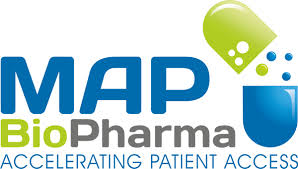Pyogenic Sterile Arthiritis Pyoderman Gangrenosum and Acne PAPA
Also known as:
- PAPA Syndrome
- PAPAS Familial Recurrent Arthitis
- FRA
Clinical Features
Lindor et al. (1997) described a multigeneration family with transmission of an autosomal dominant disorder characterized by pyogenic arthritis, pyoderma gangrenosum, and severe cystic acne. Ten affected family members manifested variable expression of pauciarticular, nonaxial, destructive, corticosteroid-responsive arthritis that began in childhood; pyoderma gangrenosum; and severe cystic acne in adolescence and beyond. Other less commonly associated features included adult-onset insulin-dependent diabetes mellitus, proteinuria, abscess formation at the site of parenteral injections, and cytopenias attributable to sulfonamide medications. Genetic studies excluded linkage to the major histocompatibility complex.
Mapping
Yeon et al. (2000) used linkage mapping to locate the PAPAS gene on chromosome 15q (maximum 2-point lod score of 5.83 with recombination fraction = 0 at D15S206). Under the assumption of complete penetrance, haplotype analysis of recombination events defined a disease interval of 10 cM between D15S1023 and D15S979. They indicated that the gene is in the same region as the IL16 gene (603035) and the CRABP1 gene (180230) (incorrectly stated to be the CRABP2 gene), which map to 15q26.1 and 15q24, respectively.
In a 3-generation family in which 9 members had been diagnosed with juvenile idiopathic arthritis (604302), Wise et al. (2000) demonstrated linkage to chromosome 15q22-q24. In this family the disease was of very early onset and included episodic inflammation leading to eventual destruction of joints, muscle, and skin. The authors treated this disorder as a distinct clinical entity which they called familial recurrent arthritis (FRA). The proband in the family reported by Wise et al. (2000) presented at the age of 5 years with a history of recurrent joint swelling and cystic skin lesions since infancy. Arthritis was characteristically intermittent and migratory and led to the accumulation of sterile pyogenic material within the joint space if left untreated. It followed a monarticular pattern (rarely more than 1 joint affected during flares). It involved primarily the elbows, knees, and ankles, although small joints were occasionally affected. The father, 2 brothers (who were twins), a paternal aunt, and 2 cousins were also affected. The father reported that he had experienced marked improvement in the joint symptoms after puberty, with subsequent appearance of severe acne. In their discussion, Wise et al. (2000) stated that familial recurrent arthritis and PAPA syndrome are likely to be the same disorder. They pointed to a patient reported by Jacobs and Goetzl (1975) who may have had the same disorder, although no information was provided.
Molecular Genetics
Wise et al. (2002) identified missense mutations in the PSTPIP1 gene (606347) gene in 2 reported families with this disorder. PSTPIP1 and its murine ortholog are adaptor proteins known to interact with PEST-type PTPs such as PTPN12 (600079). Yeast 2-hybrid assays demonstrated severely reduced binding between PTPN12 and the E250Q (606347.0001) and A230T (606347.0002) mutant proteins of PSTPIP1. Previous evidence supported the integral role of CD2BP1 (alternative symbol for PSTPIP1) and its interacting proteins in actin reorganization during cytoskeletal-mediated events. The authors hypothesized that the disease-causing mutations identified compromise physiologic signaling necessary for the maintenance of a proper inflammatory response.
REFERENCES
Jacobs, J. C., Goetzl, E. J. ‘Streaking leukocyte factor,’ arthritis, and pyoderma gangrenosum. Pediatrics 56: 570-578, 1975. [PubMed: 1165961, related citations] [Full Text]
Lindor, N. M., Arsenault, T. M., Solomon, H., Seidman, C. E., McEvoy, M. T. A new autosomal dominant disorder of pyogenic sterile arthritis, pyoderma gangrenosum, and acne: PAPA syndrome. Mayo Clin. Proc. 72: 611-615, 1997. [PubMed: 9212761, related citations] [Full Text]
Wise, C. A., Bennett, L. B., Pascual, V., Gillum, J. D., Bowcock, A. M. Localization of a gene for familial recurrent arthritis. Arthritis Rheum. 43: 2041-2045, 2000. Note: Erratum: Arthritis Rheum.: 43: 2618 only, 2000. [PubMed: 11014354, related citations] [Full Text]
Wise, C. A., Gillum, J. D., Seidman, C. E., Lindor, N. M., Veile, R., Bashiardes, S., Lovett, M. Mutations in CD2BP1 disrupt binding to PTP PEST and are responsible for PAPA syndrome, an autoinflammatory disorder. Hum. Molec. Genet. 11: 961-969, 2002. [PubMed: 11971877, related citations] [Full Text]
Yeon, H. B., Lindor, N. M., Seidman, J. G., Seidman, C. E. Pyogenic arthritis, pyoderma gangrenosum, and acne syndrome maps to chromosome 15q. Am. J. Hum. Genet. 66: 1443-1448, 2000. [PubMed: 10729114, related citations] [Full Text]
Borrowed from: https://www.omim.org/entry/604416
Last Updated on




